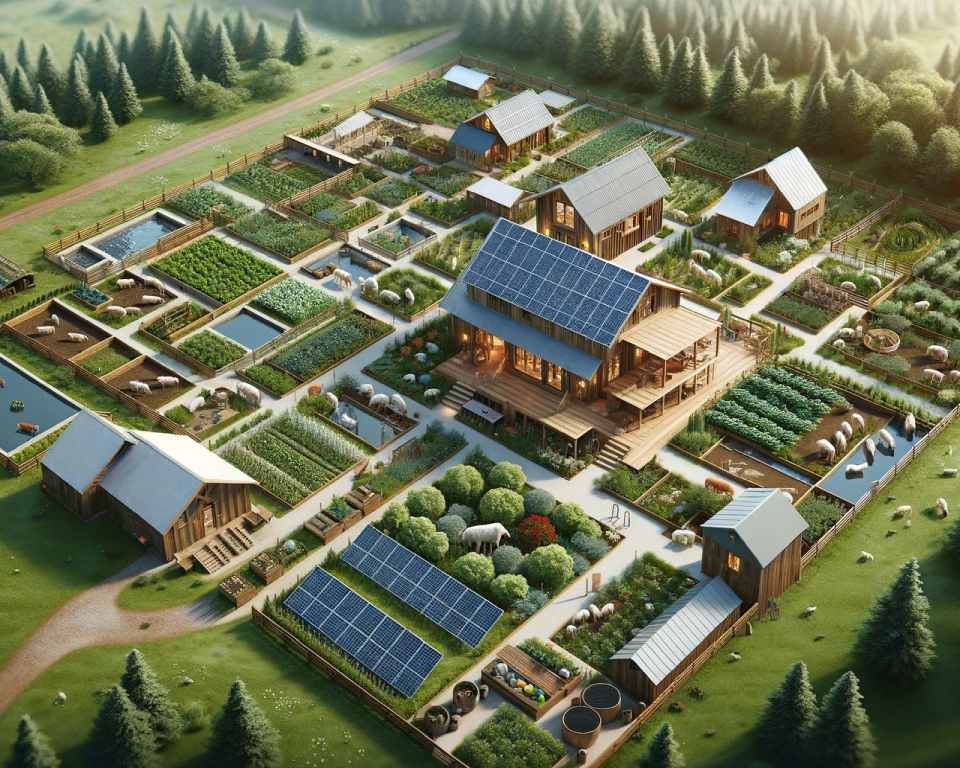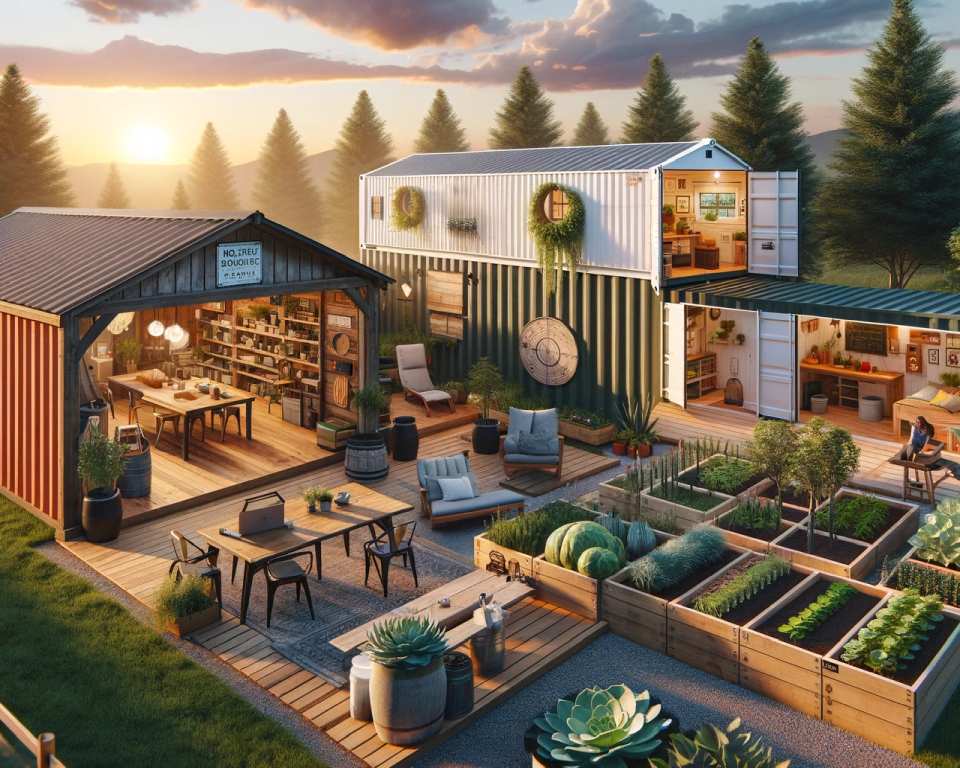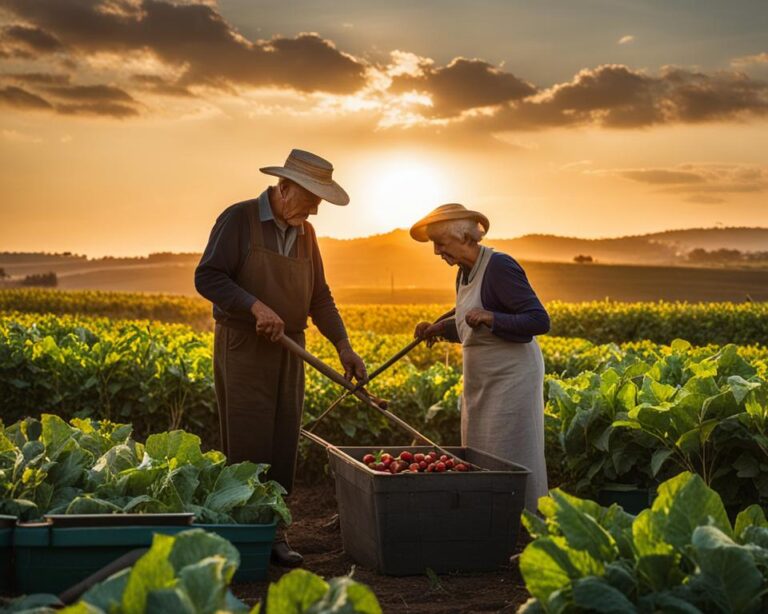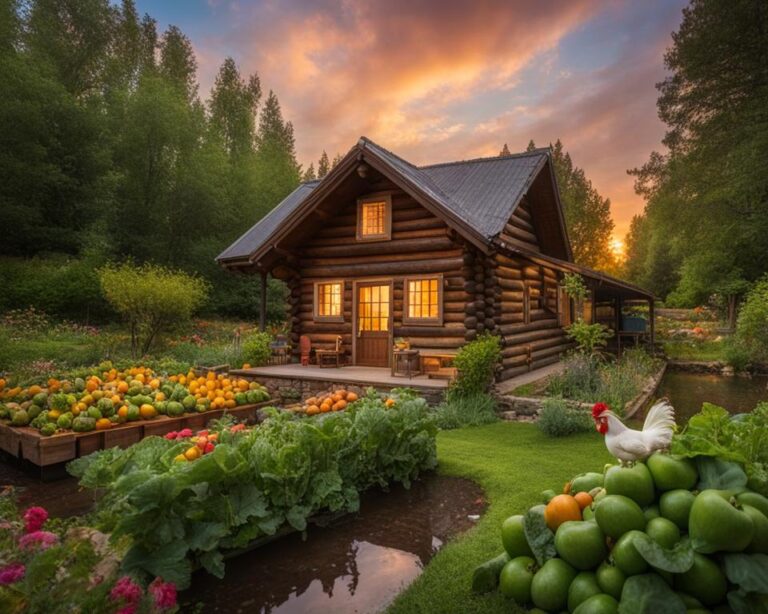Understanding Homesteading Laws: A Comprehensive Guide to Legal Aspects
Welcome to our comprehensive guide on understanding homesteading laws. In this guide, we will delve into the legal aspects of homesteading, including homesteading laws, regulations, land ownership laws, rural living laws, and homestead exemptions. Homesteading laws vary by state in the United States, so it’s essential to have a clear understanding of the legal framework before embarking on your homesteading journey.
Homesteading laws encompass a wide range of regulations that govern land ownership, homestead exemptions, and other legal requirements for living a self-sufficient lifestyle. These laws are designed to protect your rights as a homesteader and ensure that you have the necessary resources and support to thrive.
Throughout this guide, we will provide valuable information on homestead and farmstead exclusions, eligibility criteria for homesteading, benefits of homestead and farmstead exclusions, planning a homestead layout and design, pantry and storage space considerations, utility space in homesteading, budgeting and financing homesteading projects, legal considerations, and how to seek help and build a community in the homesteading community.
Whether you’re a seasoned homesteader or just starting your journey, understanding the legal aspects of homesteading will empower you to make informed decisions and navigate the complexities of rural living. Let’s explore the world of homesteading laws together and embark on a self-sufficient and fulfilling adventure.
What are Homestead and Farmstead Exclusions?
Homestead and farmstead exclusions are essential methods of providing real property tax relief to homeowners and farmers. These exclusions reduce the assessed values of eligible properties, resulting in lower property taxes.
The amount of the exclusion is determined based on factors such as the median assessed value of homestead properties in the jurisdiction. All eligible properties within the jurisdiction receive the same size exclusion, leading to a significant reduction in the property tax bill.
By reducing the assessed values, homestead and farmstead exclusions effectively provide homeowners and farmers with real property tax reductions. This relief is particularly valuable for individuals and families who rely on their homes or farms for their livelihoods and may be facing financial challenges.
Homestead exclusions are designed with the intention of providing financial support to homeowners. These exclusions help alleviate the burden of property taxes and contribute to homeownership stability.
Farmstead exclusions specifically aim to support the agricultural community by providing tax relief to farmers. These exclusions recognize the vital role farmers play in our society and the challenges they face in sustaining their operations.
“Homestead and farmstead exclusions are essential tools for promoting economic stability and supporting homeowners as well as farmers. By reducing the assessed values of eligible properties, these exclusions offer tangible property tax relief, allowing individuals and families to better manage their finances and continue contributing to their communities.”
Eligibility and Considerations for Homesteading
When it comes to pursuing a homesteading lifestyle, it’s important to understand the eligibility criteria and considerations involved. To qualify for homesteading, individuals must have a permanent residence in the taxing jurisdiction. This means having a dwelling that is primarily used as the owner’s permanent residence. It’s also essential to note that individuals can only have one permanent home at a time.

Homesteading eligibility criteria also include property ownership. Homestead properties typically include not only the dwelling but also the land beneath it, as long as it is owned by the same person who owns the dwelling. Having ownership of the property is an important factor in establishing eligibility for homesteading.
Proof of residency is another key requirement for homesteading. Individuals may need to provide documentation such as voter registration and driver’s license information to demonstrate their residency in the taxing jurisdiction. These documents help establish the individual’s connection to the community and their commitment to being a permanent resident.
By meeting these eligibility criteria and considering the necessary factors such as permanent residence, property ownership, and proof of residency, individuals can ensure they are on the right path to embark on a rewarding homesteading journey.
Key Points:
- Homesteading requires a permanent residence in the taxing jurisdiction.
- Property ownership is an important factor in homesteading eligibility.
- Proof of residency, such as voter registration and driver’s license, may be required.
“To qualify for homesteading, individuals must have a permanent residence in the taxing jurisdiction and meet certain criteria, including property ownership and proof of residency.”
Benefits of Homestead and Farmstead Exclusions
Homestead and farmstead exclusions offer significant benefits, providing real property tax relief to homeowners and farmers. These exclusions specifically target individuals who own their own dwellings, ensuring that tax reductions are directed to those who need it most. By implementing these exclusions, school districts can effectively shift the tax burden from real property tax to earned income tax, promoting a fairer and more balanced system.
One of the primary advantages of these exclusions is the reduction of the tax burden on property owners. Real property taxes can be a significant financial burden for homeowners and farmers, impacting their ability to maintain their properties and sustain their livelihoods. Homestead and farmstead exclusions help alleviate this burden, providing relief and allowing individuals to prioritize their resources towards property ownership and agricultural activities.
These exclusions are part of broader tax reform efforts aimed at supporting and promoting property ownership and agricultural endeavors. By offering targeted relief to homeowners and farmers, these initiatives encourage individuals to invest in their properties, strengthen communities, and foster self-sufficiency.
Ultimately, homestead and farmstead exclusions play a crucial role in promoting homeownership and supporting agricultural activities. They contribute to a more equitable tax system, providing relief to those who make a significant contribution to society through their property ownership and agricultural endeavors.
It is evident that homestead and farmstead exclusions have a positive impact on homeowners and farmers, making real property ownership and agricultural activities more accessible and sustainable. The implementation of these exclusions is a step towards alleviating the tax burden on property owners and fostering a thriving community of homesteaders and farmers.
Planning for a Homestead: Layout and Design
When embarking on the journey of creating a homestead, careful planning and consideration of the property’s layout and design are crucial. By strategically designing the homestead layout, you can optimize the functionality and practicality of the space, making your homesteading experience more efficient and enjoyable.
To begin, identify and allocate areas for different purposes within your homestead. Practical spaces such as the house, garden, livestock area, and tool shed should be thoughtfully planned to meet your specific needs. Consider the size and location of each space, ensuring they are easily accessible and conveniently located relative to one another.
Take advantage of the natural features of your land when designing your homestead. Analyze the soil type, sunlight exposure, and landscape contours to determine the best locations for various elements of your homestead. For instance, you may want to position your garden in an area with ample sunlight and well-drained soil, while placing the livestock area in a spot that provides shade and shelter.

“The design of your homestead should be a reflection of your vision and goals. It should support the activities and functions that are essential to your self-sufficient lifestyle.”
Access to water sources is essential for any homestead. When laying out your property, consider the proximity to water sources such as ponds, streams, or wells. This will ensure that you have convenient access to water for irrigation, livestock, and other needs.
To create a functional and aesthetically pleasing design, consider incorporating natural elements into your homestead. Utilize natural materials for structures, pathways, and fences, blending them harmoniously with the surrounding environment. This not only adds visual appeal but also promotes sustainability and integration with nature.
Remember, a well-planned homestead layout optimizes the workflow and productivity of your daily activities. It should allow for easy movement between different areas, efficient management of resources, and a sense of harmony and balance in your surroundings. Through intentional design choices, you can create a homestead that is not only practical but also beautiful.
Pantry and Storage Space for Homesteading
Adequate pantry and storage space is crucial for successful homesteading. It allows us to store essential items such as food, seeds, and tools, ensuring we are well-prepared and self-sufficient. To effectively organize our pantry and storage area, we should utilize appropriate storage containers like mason jars and plastic bins. These containers help keep our supplies neatly arranged and easily accessible when needed.
In addition to storage containers, shelving and cabinets play a vital role in optimizing space and maintaining an organized homestead. By utilizing sturdy shelves and cabinets, we can efficiently store items of different sizes, making the best use of available vertical space. This not only maximizes our storage capacity but also makes it easier to locate and retrieve items, saving us valuable time and effort.
When setting up our pantry and storage area, it is essential to create a dry and cool environment. Proper ventilation and insulation help preserve the quality and extend the shelf life of stored items, especially perishable foods. By implementing strategies such as placing moisture-absorbing packets or utilizing temperature-controlled storage options, we can ensure our food stays fresh and our supplies remain in optimal condition.
Having a well-organized and functional pantry and storage space is not only practical but also contributes to a sense of order and efficiency on our homestead. With everything neatly arranged and easily accessible, we can streamline our daily tasks and focus on other essential aspects of homesteading. Whether it’s storing harvested produce, preserving canned goods, or organizing our tools and equipment, a well-designed pantry and storage area are indispensable for smooth and successful homesteading.
Key Points:
- Adequate pantry and storage space is essential for homesteading.
- Utilize storage containers such as mason jars and plastic bins for organization.
- Shelving and cabinets optimize space and help maintain an organized homestead.
- Create a dry and cool environment to preserve the quality of stored items.
“A well-organized pantry and storage area contribute to a sense of order and efficiency on our homestead.”
Utility Space in Homesteading
In homesteading, having a designated utility space is crucial for carrying out various activities such as cooking, canning, and gardening. This area serves as a centralized hub where we can efficiently manage and utilize resources, ensuring functionality and convenience.
When designing the utility space, it’s important to consider its designated area within the homestead. This area should be well-suited for the intended activities, allowing easy access to electricity and water sources. By strategically locating the utility space, we can create a seamless workflow and optimize our daily homesteading tasks.
To ensure functionality, the utility space should be equipped with essential amenities. Consider installing countertops, sinks, and stovetops for efficient meal preparation. Additionally, having ample storage areas for tools, supplies, and preserved food can help maintain an organized and clutter-free environment.
One key aspect of the utility space is access to electricity and water. These utilities are essential for various homesteading activities, such as powering kitchen appliances, running water pumps, and operating tools. Ensure that the utility space is equipped with reliable electrical outlets, switches, and plumbing connections to meet these needs.

Efficient Storage and Organization
Storage needs are an integral part of the utility space. To make the most of the available space, consider implementing smart storage solutions. Utilize shelves, cabinets, and bins to keep tools, jars, and supplies neatly organized.
Designate specific areas for different homesteading needs. For example, have separate sections for canning supplies, gardening tools, and cooking utensils. This organization will save time and effort, allowing us to easily locate and access what we need during our homesteading activities.
By utilizing a designated utility space, we create a practical and efficient area for essential homesteading tasks. With functional design, access to electricity and water, and ample storage, this space becomes the heart of our homesteading endeavors, enabling us to live a self-sufficient lifestyle.
Budgeting and Financing Homesteading Projects
Budgeting and financing are crucial aspects of homesteading projects. As you embark on your journey towards self-sufficiency, it is important to have a clear understanding of the Homesteading budget and total cost involved. This will help you plan and allocate your resources effectively.
Calculating the total cost of your homesteading project is the first step. Consider expenses such as land acquisition, building materials, livestock, equipment, and any additional costs specific to your plans. It is important to be as detailed as possible to ensure an accurate estimation.
Once you have determined the total cost, it’s time to assess your financial resources and explore the available financing options. This may include personal savings, loans, grants, or support from homesteading organizations. Research different financing avenues and evaluate their terms and interest rates to make an informed decision.
Prioritizing expenses is another key factor in managing your budget effectively. Identify your needs and wants and allocate your resources accordingly. Focus on essential aspects such as shelter, water sources, and food production before considering non-essential elements.
Remember, homesteading is a long-term investment in self-sufficiency. It’s important to be realistic about your budget and take into account ongoing expenses such as maintenance, utilities, and unforeseen costs.
Having a well-planned budget and financing strategy will provide a solid foundation for your homesteading journey. It will help ensure a smooth implementation of your plans and allow you to prioritize your expenses effectively.
By carefully considering your Homesteading budget, total cost, financing options, expenses, and by prioritizing your spending, you will be on your way to creating a sustainable and self-reliant homestead.
Legal Considerations in Homesteading
Before embarking on your homesteading journey, it is crucial to understand the legal aspects associated with homesteading. Familiarizing yourself with local zoning laws and regulations, tax implications, insurance coverage, and other legal considerations will ensure a smooth and lawful homesteading experience.
Understanding Zoning and Permits
Zoning laws regulate land use and determine what activities are allowed on your property. Depending on your location, there may be specific zoning requirements for homesteading activities such as raising livestock, constructing outbuildings, or running a home-based business. It is essential to research and comply with these regulations to avoid potential fines or legal issues.
In some cases, permits may be required for certain modifications to your property or specific homesteading activities. For example, building permits may be necessary for constructing new structures or making significant renovations. It is important to check with your local authorities and obtain the appropriate permits to ensure compliance with regulations.
Tax Implications
Homesteading can have tax implications, and it is important to understand how your property taxes may be affected. Depending on your jurisdiction, homestead exemptions or other tax relief programs might be available. These programs can reduce the assessed value of your property, resulting in lower property taxes. Consulting with a tax professional or researching local tax laws can help you navigate the tax implications of homesteading.
Insurance Coverage
When homesteading, it is crucial to ensure that you have appropriate insurance coverage to protect your property and assets. Standard homeowner’s insurance policies may not fully cover the unique risks associated with homesteading activities such as farming, livestock raising, or off-grid living. Consider speaking with an insurance agent who specializes in rural or farm insurance to determine the coverage options that best suit your homesteading needs.
Complying with Local Regulations
Each locality may have its own set of regulations and restrictions related to homesteading. These regulations can vary widely, covering areas such as noise ordinances, water usage, waste disposal, and even the size and type of livestock that can be kept on the property. Familiarize yourself with the local regulations applicable to your area to ensure you are in compliance with all legal requirements.
By understanding and adhering to the zoning and permits, tax implications, insurance coverage, and local regulations, you can confidently pursue your homesteading dreams while staying on the right side of the law.

Seeking Help and Building Community in Homesteading
Homesteading can be an incredibly rewarding but challenging venture. As homesteaders, we understand the importance of seeking help and advice when faced with obstacles along the way. Fortunately, there is a strong sense of community within the homesteading world, where individuals are eager to lend a hand, share their knowledge, and support one another.
By building connections with fellow homesteaders in your area, you can tap into a wealth of valuable insights and experiences. Joining local homesteading groups, attending workshops, or participating in community events provide excellent opportunities to connect with like-minded individuals who share your passion for self-sufficiency and sustainable living.
When seeking advice, remember that collaboration and knowledge sharing are at the heart of the homesteading community. Feel free to reach out to experienced homesteaders for guidance on various topics, such as gardening techniques, animal husbandry, food preservation, and more. Engaging in conversations, asking questions, and actively participating in discussions will not only help you acquire valuable information but also foster friendships and a sense of belonging.
“Homesteading is not just about the land we cultivate, but also about the community we nourish.”
As you embark on your homesteading journey, consider contributing to the community as well. Share your own knowledge and experiences with others, whether it’s through blogging, hosting workshops, or volunteering your time to teach others the skills you’ve acquired. By actively participating in the homesteading community, you play a crucial role in its growth and vitality.
Benefits of Building Community in Homesteading
Building a supportive network of fellow homesteaders offers numerous benefits:
- Access to a wealth of knowledge and expertise
- Opportunities for collaboration on projects and initiatives
- Shared resources, skills, and tools
- Moral support during challenges and setbacks
- Friendships and a sense of belonging
- Enhanced learning and personal growth
Remember, homesteading is not meant to be a solitary journey. Embrace the power of community, seek support when needed, and contribute your unique skills to help others thrive in their own homesteading endeavors.
Planning Indoor and Outdoor Spaces for Homesteading Activities
When it comes to homesteading, careful planning of indoor and outdoor spaces is essential to create a self-sufficient lifestyle. By considering the needs for specific activities such as cooking, crafting, and gardening, we can design functional areas that support our homesteading endeavors.
One cost-effective solution for creating designated spaces is to repurpose existing structures. Whether it’s a barn, shed, or even a storage container, these structures can be transformed into workshops, storage areas, or even cozy retreats. Repurposing existing structures not only saves money but also adds character and charm to our homestead.
It’s important to remember that homesteading activities should be accommodated in both indoor and outdoor spaces. Indoor spaces can be used for activities that require shelter or controlled environments, such as food preservation, crafts, or even indoor gardening. Outdoor spaces, on the other hand, are perfect for tending to crops, raising livestock, and enjoying nature.
By carefully planning our indoor and outdoor spaces, we can optimize our homesteading activities and create a harmonious balance between functionality and self-sufficiency. So let’s get creative with repurposing existing structures and design spaces that support our homesteading journey.

FAQ
What are homesteading laws?
Homesteading laws are regulations enacted by each state in the United States to govern land ownership and rural living. These laws outline the legal requirements, such as eligibility criteria, application processes, and property rights, for individuals interested in living a self-sufficient lifestyle on their own land.
What are homestead and farmstead exclusions?
Homestead and farmstead exclusions are methods of providing real property tax relief to homeowners and farmers, respectively. These exclusions reduce the assessed values of eligible properties, resulting in lower property taxes. The amount of the exclusion is determined based on factors such as the median assessed value of homestead properties in the jurisdiction.
How can I qualify for homesteading?
To qualify for homesteading, individuals must have a permanent residence in the taxing jurisdiction and meet certain criteria, including property ownership and proof of residency. A permanent home is defined as a dwelling primarily used by the owner as their permanent residence. Homestead properties include the land under the dwelling, as long as it is owned by the same person who owns the dwelling. Proof of residency can include voter registration and driver’s license information.
What are the benefits of homestead and farmstead exclusions?
Homestead and farmstead exclusions provide targeted relief to homeowners and farmers, ensuring that real property tax reductions go to those who own their own dwellings. These exclusions are part of broader tax reform efforts that allow school districts to shift the tax burden from the real property tax to the earned income tax. By reducing the tax burden on property owners, homestead and farmstead exclusions promote homeownership and agricultural activities.
How should I plan the layout and design of my homestead?
When planning a homestead, it is important to consider the layout and design of the property. This includes identifying practical and functional spaces such as the house, garden, livestock area, tool shed, and more. The layout should take into account natural features of the land, such as soil type and sunlight exposure. Access to water sources and other amenities should also be considered in the design.
How should I organize pantry and storage space for homesteading?
Adequate pantry and storage space is essential for homesteading, as it allows for the storage of food, seeds, and tools. The pantry and storage area should be well-organized and include appropriate storage containers such as mason jars and plastic bins. Shelving and cabinets can also help in organizing the space efficiently. It is important to keep the pantry and storage area dry and cool to maintain the quality and shelf life of stored items.
Why is a utility space important in homesteading?
Having a designated utility space in homesteading is important for carrying out various activities such as cooking, canning, and gardening. This space should be functional and well-equipped, with access to electricity, water, and proper storage areas for tools and supplies. Organizing the utility space by function can help in efficient management and utilization of resources.
How can I budget and finance my homesteading project?
Budgeting and financing are crucial aspects of homesteading projects. It is important to accurately calculate the total cost of the project, including expenses for building materials, livestock, and equipment. A thorough assessment of financial resources and available financing options should be done to ensure smooth implementation of the homesteading plan. Prioritizing expenses based on needs and wants can help in managing the budget effectively.
What legal aspects should I consider in homesteading?
Before starting a homesteading journey, it is important to be familiar with the legal aspects associated with homesteading. This includes understanding local zoning laws and regulations, tax implications, and insurance coverage. Depending on the location, permits may be required for certain modifications to the property or specific homesteading activities. It is essential to comply with local regulations and laws to ensure a smooth and legal homesteading experience.
How can I seek help and build a community in homesteading?
Homesteading can be challenging, and it is important to seek help and advice when needed. There is a strong sense of community among homesteaders, with many individuals willing to share their knowledge and experiences. Building connections with other homesteaders in the area can provide valuable insights and support. Whether it is joining local homesteading groups or attending workshops, actively seeking help and building a network can enhance the homesteading experience.
How should I plan indoor and outdoor spaces for homesteading activities?
Planning indoor and outdoor spaces is essential for facilitating various homesteading activities. It involves considering the needs for specific activities such as cooking, crafting, and gardening. Repurposing existing structures can be a cost-effective solution for creating designated spaces. Homesteading activities should be accommodated in both indoor and outdoor spaces to ensure a well-rounded and self-sufficient lifestyle.







